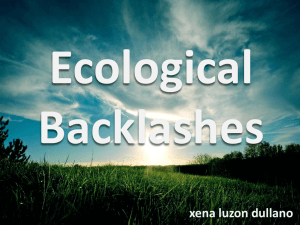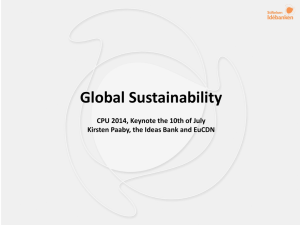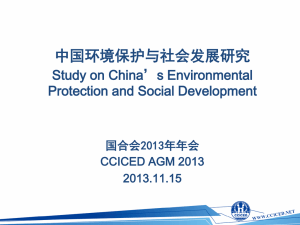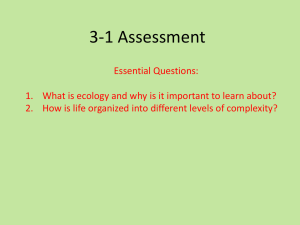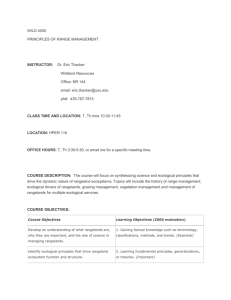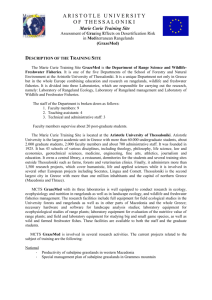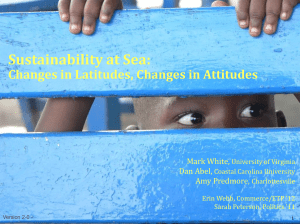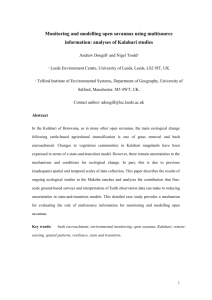ELD Policy Workshop. Ecology findings, July 2014
advertisement
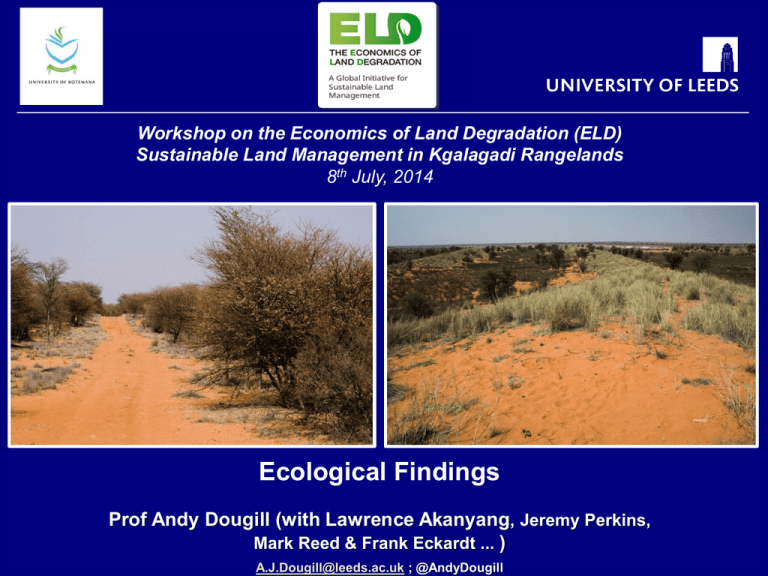
School of Earth and Environment INSTITUTE FOR CLIMATE AND ATMOSPHERIC SCIENCE Workshop on the Economics of Land Degradation (ELD) Sustainable Land Management in Kgalagadi Rangelands 8th July, 2014 Ecological Findings Prof Andy Dougill (with Lawrence Akanyang, Jeremy Perkins, Mark Reed & Frank Eckardt ... ) A.J.Dougill@leeds.ac.uk ; @AndyDougill Ecological Changes & Management Participatory Rangeland Monitoring & Management: Kgalagadi Studies • Participatory development of rangeland degradation indicators (Reed et al., 2008) & links to Management Guides translated to Setswana / Afrikaans (Reed & Dougill, 2010) • Dynamic system model from integration of local & scientific knowledge (Dougill et al., 2010) enabling link to economic projections / sceanrios • Limited uptake prevented progress as seen in communal rangelands of Namibia Soil Carbon Storage & Flux Studies Namibia • In-situ analysis of CO2 fluxes between soil & atmosphere - applied for Kalahari sand (Thomas Botswana et al., 2011) & salt pans (Thomas et al., 2014) South Africa • Findings show susceptibility of biological soil crusts to release of CO2 with warming, drying & disturbance (grazing) Kalahari Sands • Enhanced C storage predicted for Wildlife Management Areas where grazing levels remain lower & should be valued when considering Payment for Ecosystem Services schemes (Dougill et al., 2012) ELD Ecological Study Design • ELD Study provides dual-scale ecological assessments of links between land use, management & degradation in Kgalagadi District • Farm-scale ecological analyses along ‘piosphere’ grazing gradients away from borehole waterpoints on communal grazing lands, private cattle ranches & private game ranches in March 2014 • Landscape-scale analysis of remotely sensed data of vegetation cover (NDVI as measure of green biomass 2000 – 2013) & animal numbers (from 2012 national aerial animal census) Ecological Findings 1 • Below average rainfall in 2014 led to a high % of bare ground (7090%) & forb cover (5-20%) across all land uses, with temporal variability also shown clearly by NDVI anomalies by year Ecological Findings 2 • Widespread bush encroachement found across the semi-arid study sites with Acacia mellifera, Grewia flava & Dichrostachys cinerea cover & density increased at expense of perennial grass layer on which cattle production is based • Bush encroachment extensive across communal grazing areas & private cattle ranches displaying that privatisation is not directly leading to more sustainable land management Ecological Findings 3 • For arid sites in the SW, Rhigozum trichotomum forms impenetrable thickets close to boreholes, but otherwise bush encroachment absent • Dune instability occurs to a distance of c. 1.2km from boreholes following the removal of Stipagrostis amabilis grass cover • Ecological change pressures observed around Molopo river where the exotic Prosopis glandulosa observed & blamed locally for declining soil moisture & groundwater levels & expensive to remove Ecological Findings 4 • Regional patterns of key wildlife species (eland, wildebeest) shows that the expansion of cattleposts & fenced ranches has led to large areas of southern Kgalagadi with low biodiversity even where cattle production not practiced • Conclusions • Dual-scale ecological analyses add new insights into rangeland degradation problems of arid and semi-arid Kgalagadi rangelands • Bush encroachment (semi-arid) & dune mobilisation (arid) are most notable forms of land degradation linked to shifts in land use towards more widespread intensive cattle grazing & have impacts on reduced biodiversity & soil C storage • Land tenure changes (to private ownership) have not prevented rangeland degradation across Kalahari • Sustainable land management practices & rehabilitation options available by integration of local & scientific knowledges locally if facilitated together with landscape-scale land use planning regionally to ensure heterogeneity in, & connectivity of, land uses Full report @ http://www.see.leeds.ac.uk/research/sri/eld

